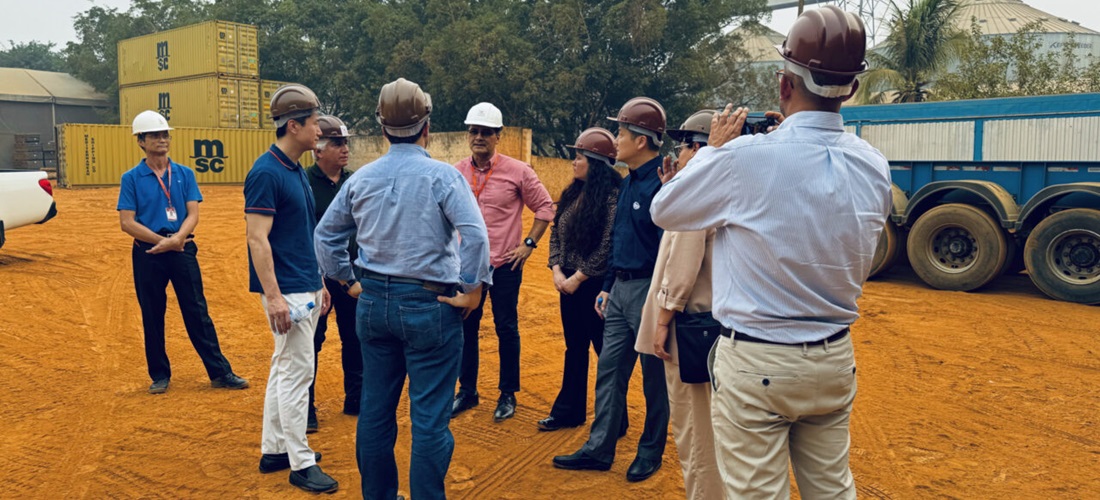
Rondonia port aims for link with China through Peru’s Chancay Port
Sep, 10, 2024 Posted by Gabriel MalheirosWeek 202437
The government of the Brazilian Amazonian state Rondônia is at the center of a potential strategic partnership with a Peruvian transportation, logistics, supply chain, and storage company, alongside a Chinese shipping company. This collaboration could open new logistical routes between Brazil, Peru, and China. During a visit to the Porto Velho Port on Tuesday (3), both institutions expressed interest in linking the Brazilian terminal to the Port of Chancay in Peru, which is nearing the final stages of construction and is expected to go operational by the end of the year.
According to the governor of Rondônia, Marcos Rocha, this initiative could significantly boost regional development. “The infrastructure of the Porto Velho terminal and its import and export operations are crucial to strengthening this partnership, positioning the state as a key link between the Asian and South American continents,” Rocha emphasized.
ROUTE
The plan involves creating a route that utilizes the Madeira, Amazon, and Solimões rivers, passing through the customs border in Tabatinga, Amazonas, and reaching Pucallpa in Peru. From there, goods would be transported by land to the Port of Chancay, where they would be exported to China, with soy being the leading commodity. In the reverse direction, the route would be used for importing fertilizers.
The Porto Velho Port already maintains connections with Iquitos, Peru, a journey of about 20 days. With the new route, goods could be cleared directly in Porto Velho and sent to China, improving logistical efficiency and enhancing economic integration between Brazil and Peru, facilitating imports and expanding existing exports.
LOGISTICAL FEASIBILITY
The companies responsible for managing the high-capacity terminal in Chancay assessed the route’s viability and found the project promising. Juan Manoel Gonzales, deputy manager of the Peruvian company, highlighted Porto Velho’s strategic location. “Porto Velho is centrally located in South America and is connected to Peru by two routes: the first via the Madeira and Amazon rivers, reaching Iquitos and Pucallpa, and the second via the Interoceanic Highway, also known as the Pacific Highway.”
Gonzales also noted that the inauguration of the Chancay Port will reshape cargo transport lanes in the South Pacific. Its capacity to accommodate large vessels will shorten transit times for cargo across South America. “This is a great opportunity to strengthen the connection between Peru and Brazil, which are positioned along the Pacific and Atlantic coasts. Porto Velho becomes a middle ground,” he explained.
INFRASTRUCTURE
During the visit, Porto Velho Port officials showcased the terminal’s infrastructure, cargo handling capacity, and export and import operations dynamics. Each barge can carry up to 2,000 tonnes of soy, and a convoy of 20 barges can transport up to 40,000 tonnes per trip. As the port approaches its 50th anniversary, it has land available for leasing and greenfield projects with top legal security for investors.
Fernando Parente, CEO of the Society of Ports and Waterways of Rondônia (Soph), the company that operates the terminal in Porto Velho, noted, “This partnership has the potential to transform Porto Velho into a critical link in the logistics chain connecting South America to Asia, offering faster and more efficient alternatives for international trade.”
PARTNERSHIP CONSOLIDATION
Gonzales pointed out that the primary challenges are of infrastructural and regulatory nature. “It’s like discussing hardware and software. The physical infrastructure is highly advanced. The road network between Peru and Brazil is complete, but cargo transfer points are needed near the border. From a regulatory perspective, we need to increase the number of trucks crossing the border, which would lower freight rates through higher availability. Additionally, easing sanitary procedures to facilitate international transit and streamlining customs processes is essential to speed up border crossings.”
-
Grains
Apr, 11, 2022
0
Argentine grain carriers go into strike amid harvest.
-
Ports and Terminals
May, 13, 2021
0
Deactivated port equipment from the former Libra terminal in Santos is up for auction
-
Ports and Terminals
Mar, 24, 2020
0
Norsul and Açu Port join forces to provide new feeder service between Açu and Rio
-
Grains
Mar, 15, 2023
0
Brazil corn crop expected to surpass 126 mln T on larger area, yields

